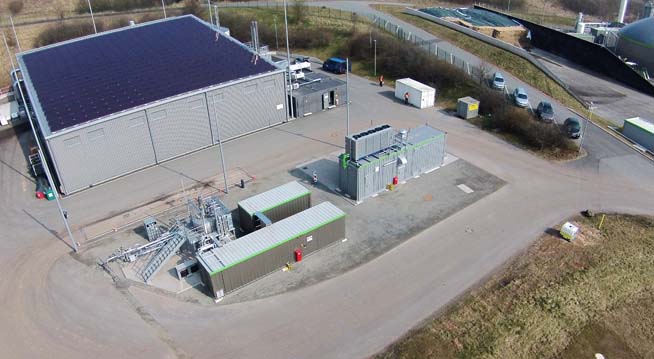Plants for energy storage
The future of energy is in storage; Power to Gas is the solution.

Electricity can be stored
The increase in the generation of electricity from renewable sources has created new challenges for the energy system. The air and the sun are clean sources, but they are not continuous and cannot be scheduled. As a result, there are peak moments of electricity generation that are balanced with recourse to fossil fuels.
The question, then, arises: how is it possible to recover the production of excess electricity? The answer is Power to Gas.
The conversion of excess generated electricity into methane eliminates the need to rely on fossil fuel power plants.
The European and, in particular, the Italian natural gas network offers great storage capacity. That makes it particularly suitable to receive the production of methane synthesised from excess electricity generated from renewable sources, such as wind and photovoltaic, with the Power to Gas technology.
MicrobEnergy GmbH – Specialist in methanation
MicrobEnergy GmbH, a Viessmann group company, develops and markets microbiological products and technical components. It is also specialised in the management and optimisation of biological processes and systems.
The intermediate step: electrolysis
The Power to Gas process may be summarised as follows: excess electricity is converted into hydrogen, thanks to the electrolysis process. Electrolysis is followed by the so-called methanation stage, during which hydrogen is mixed with carbon dioxide for the production of synthetic methane. The carbon dioxide required may derive from industrial processes, may be extracted from the air, or may originate from biomethane plants.
Microorganisms convert electricity to methane
Methanation takes place biologically: MicrobEnergy uses highly specialised microorganisms that are capable of converting hydrogen and carbon dioxide into pure methane. The microorganisms work at a temperature of 60°C and at low pressure; the original gases do not need to be particularly pure. The synthetic methane obtained this way may either be stored locally or injected into the natural gas mains.
Connecting the electricity and gas mains
This way, electricity is once more converted into a primary energy source and can then be used for the production of heat, as biofuel, or even to generate new electricity at times of low production from unsteady renewable sources. This connection between the electricity and natural gas mains is a fundamental prerequisite for the success of the energy transition.

